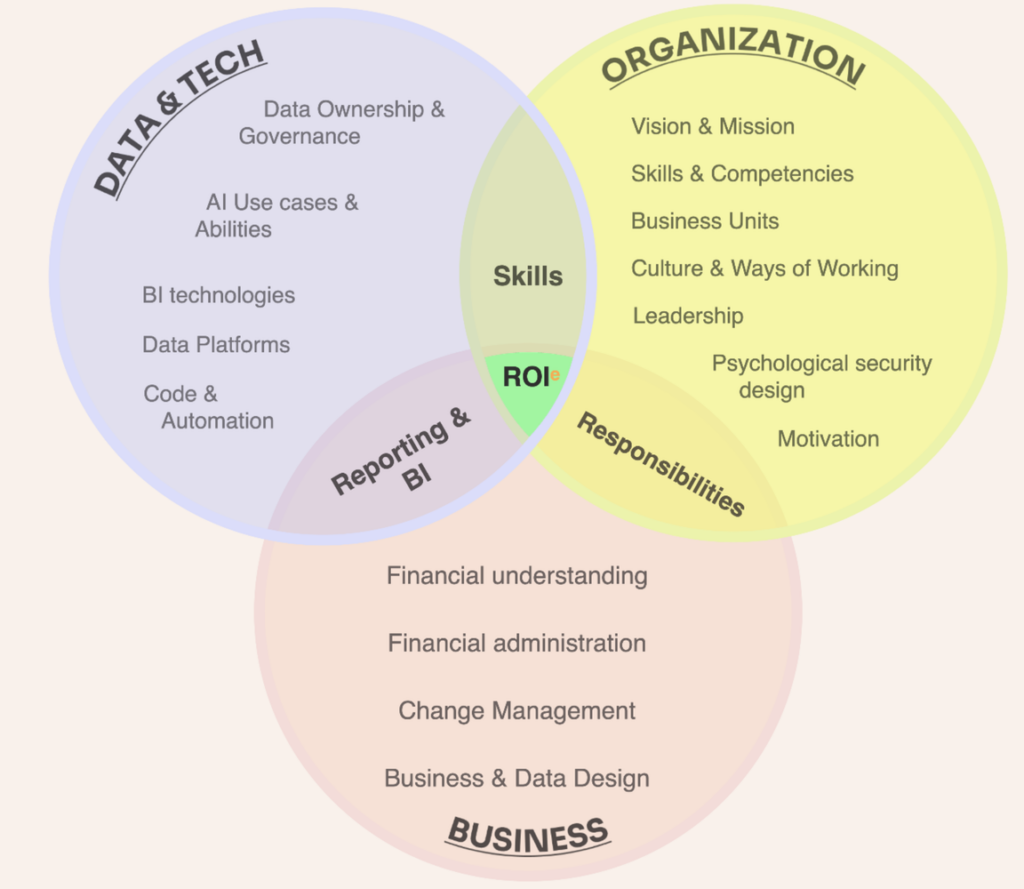Organizations have made substantial investments in technology over the past decades, and this trend is rapidly accelerating. In the late ’90s, the technology landscape required mastery of only a handful of tools to extract information from data. Today, with the proliferation of cloud platforms, the number of essential technologies has grown exponentially. Regardless of the chosen cloud platform, a multitude of technologies and solutions are necessary to manage, clean, document, prepare, model, share, and report data. The complexity is further heightened when considering the diverse needs of Data Science and AI.
Generative AI has emerged as a transformative force, impacting all facets of an organization and influencing existing tools and solutions. While it enhances efficiency, Generative AI introduces new requirements for data structures, security protocols, and corporate governance within organizations. Despite its capabilities, it’s crucial to note that Generative AI doesn’t assume responsibility for decisions and actions; that remains the responsibility of human operators.
To realize the full Return on Existing Investments (ROIe), organizations must ensure that users maximize the utilization of these tools and solutions. While significant investments are made in technology, equal attention should be given to nurturing the skills of the teams, the potential generators of profit. It is imperative to monitor how users leverage these investments actively. The real value lies not just in the technology itself but in how effectively it is utilized by individuals within the organization.
Data Empathy – a Holistic Approach
When investing in new technology, organizations must concentrate on three primary areas. The principal impetus for any investment typically originates from business needs and potential benefits. The technology team plays a pivotal role in narrowing down and selecting appropriate technologies for the identified requirements. In theory, collaboration between business and technology teams can yield flawless reporting systems and dashboards. However, the recurring challenge lies in the third crucial area – the organization.

The diagram above illustrates the common areas for any organization and their interdependencies. In Data & BI projects, collaboration between Business and Data & Tech teams is typical. However, the ultimate success is contingent upon whether people use the solutions, find them easily applicable in their roles, and whether the business demands their usage, all of which require continuous monitoring.
To achieve Return on Existing Investments (ROIe), it is crucial to identify user needs through Work Design. Understanding the information required for everyday tasks, assessing data skills and literacy, and providing targeted training and coaching are vital. Leadership, management systems, and organizational culture play pivotal roles in achieving ROIe, impacting the human element significantly. Without an organizational emphasis on data use, investments may not yield expected results.
The path to realizing the full return on existing investments involves focusing on the organization and its people, embracing Data Empathy.
Decision Dimensions – Aligning People, Processes and Data
Management Information Systems are 90% people said my professor in 90’s. Today we have so much new and existing tech that we might not remember this truth. We are blinded by expanding number of technologies and solutions and often users are not able to keep up with the pace of development. Introducing new systems alone is insufficient; attention must be directed towards role design. This entails understanding how work aligns with the new system, necessitating changes to fully realize the benefits of the investment.

Aligning People, Processes and Data. People within an organization occupy specific roles, belong to teams, and engage in processes where decisions take place. To enhance data utilization and identify gaps in both people’s capabilities and data availability, an understanding of work design is essential. Mapping out a user’s typical day, identifying decisions tied to processes, and determining data requirements for those decisions are critical. Data presentation should align with actionable intelligence requirements, meeting the demands of users and fostering motivation for increased data utilization. Importantly, it’s essential to identify the role of GenAI/LLM solutions in the user’s daily workflow, not just focusing on technical solutions.
In conversations with numerous leaders and data & BI professionals, it’s surprising how little attention organizations have given to their people. While many have heavily invested in Cloud Data Platforms, AI solutions, and BI fronts, acknowledging that people are the biggest challenge in reaping the full benefits of these investments, very few have taken tangible steps to bridge the gap between people and data.
Now it is time to do just that.


